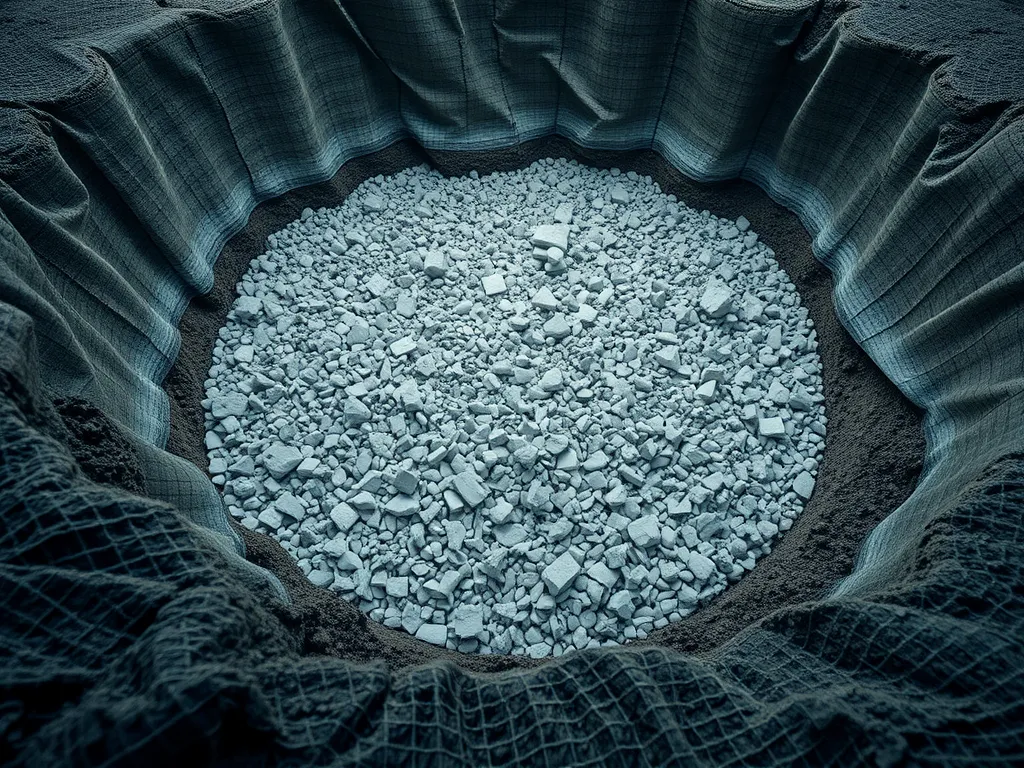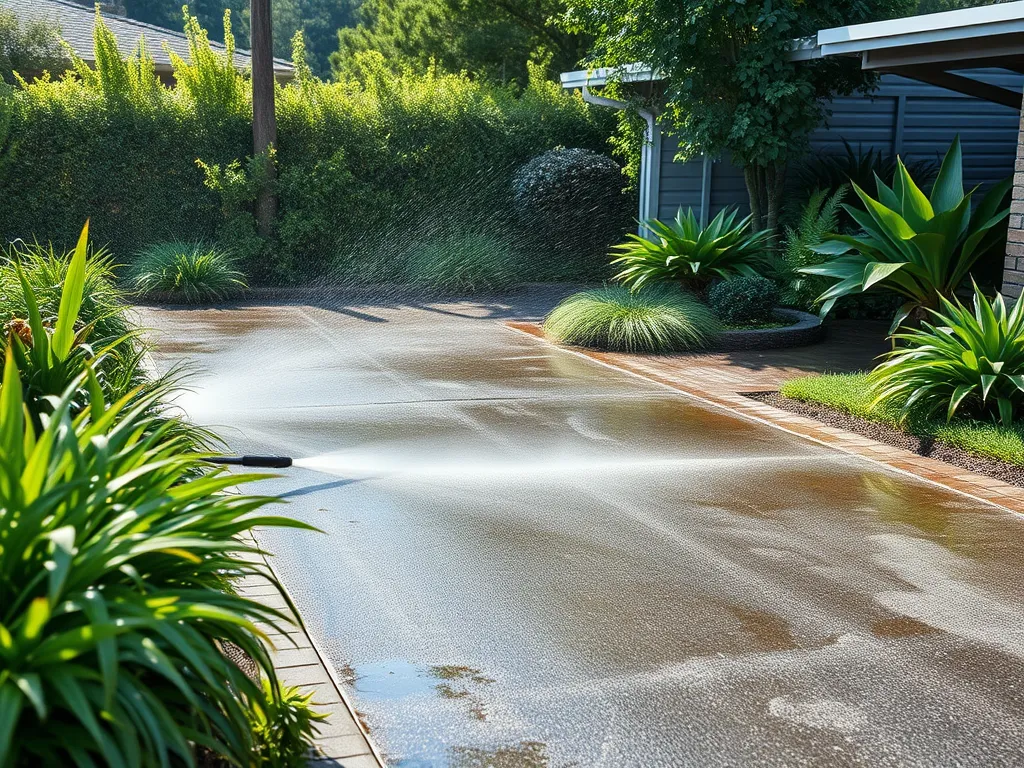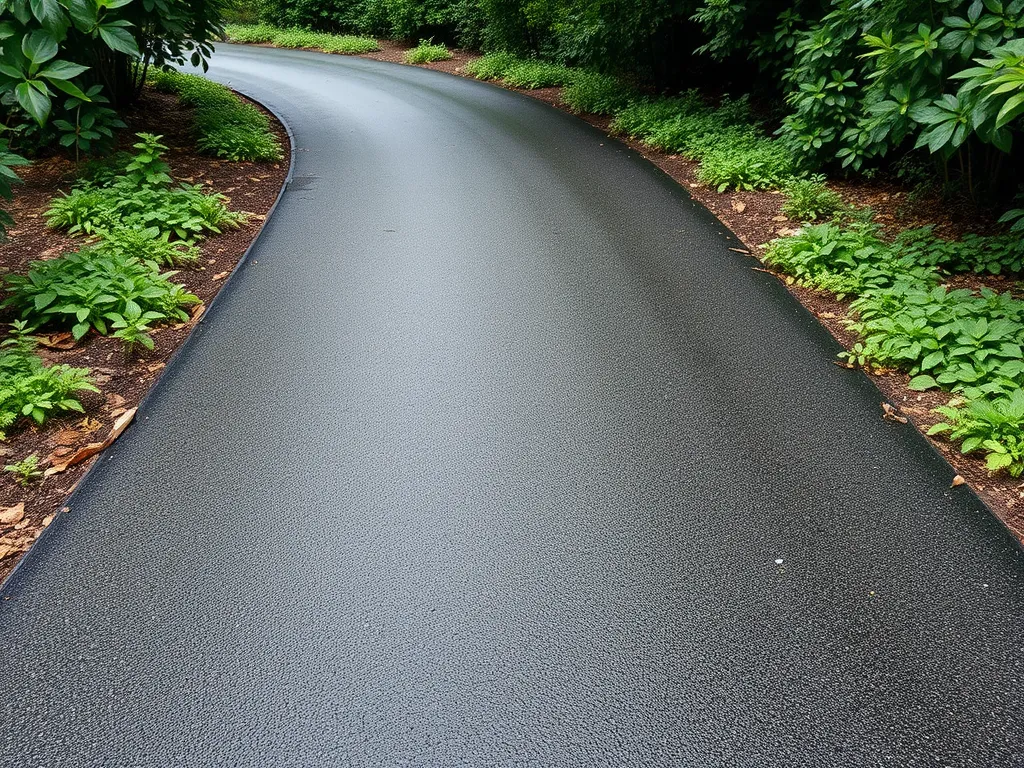Common Asphalt Driveway Problems (and How to Stop Them)
Published on: October 20, 2025 | Last Updated: April 14, 2025
Written By: George Voss
Asphalt driveways face three main maintenance issues: surface cracks, potholes, and water pooling. These problems stem from weather exposure, heavy use, or poor drainage. Addressing cracks early with sealing prevents 80% of major repairs, while proper grading stops water damage before it starts. Learn which solutions match each issue to protect your driveway’s 15-20 year lifespan.
This guide covers how to spot trouble areas, choose repairs like infrared patching or cold mix asphalt, and prevent future damage. You’ll find steps for DIY crack filling, cost comparisons for resurfacing vs. replacement, and eco-friendly options like recycled asphalt pavement (RAP). We’ll also explain why sealcoating every 3-5 years blocks UV rays and oil stains – key for avoiding $4,000+ replacement costs.
Contents
Common Asphalt Driveway Problems
Driveways face daily wear from weather, weight, and time. Spotting issues early prevents costly fixes later. Let’s break down three frequent asphalt challenges.
Cracking and Surface Damage
Surface cracks signal trouble beneath. Left unchecked, they escalate into deeper structural failures.
Causes of Asphalt Cracks: Thermal Stress and Moisture
Temperature swings cause asphalt to expand and contract. This creates hairline cracks (1/8” wide) called thermal fractures. Water seeps into these gaps, eroding the base layer. Heavy rain or poor drainage speeds this process, leading to “alligator cracking” – interconnected cracks resembling reptile skin.
Solutions: Crack Sealing and Asphalt Patching
Fill small cracks with asphalt emulsion sealant ($0.20-$0.40 per linear foot). For gaps wider than ½”, use rubberized filler. Alligator cracks require full-depth patching: cut damaged areas, replace base material, compact new asphalt. Annual inspections catch issues before spreading.
Potholes and Structural Deterioration
Potholes form when cracks meet traffic. A single pothole can grow 300% in one season without repair.
Causes: Freeze-Thaw Cycles and Heavy Loads
Water trapped under asphalt freezes at 32°F, expanding by 9%. Thawing creates air pockets. Repeated cycles collapse pavement layers. Trucks over 10,000 lbs accelerate damage – typical residential driveways handle 3,000-4,000 lbs max.
Solutions: Cold Patch Repairs and Infrared Asphalt Restoration
Temporary fix: pack cold mix asphalt ($25/bag) into holes. Permanent repair uses infrared heaters to soften existing asphalt (300°F), blend with fresh mix, and recompact. Infrared repairs bond better, lasting 5-8 years versus 1-2 for cold patches.
Drainage Issues and Water Pooling
Standing water cuts asphalt life by 50%. Proper drainage is non-negotiable.
Improper Slope or Grading Problems
Driveways need 2-3% slope away from structures. Settling soil or poor installation flattens this angle. Water pools in low spots, softening subgrades. One inch of standing water can penetrate full asphalt depth in 24 hours.
Solutions: Installing French Drains or Trench Drains
French drains: perforated pipes in gravel-filled trenches (18” deep) redirect groundwater. Trench drains – grated channels across driveways – handle surface runoff. Both systems move 15-25 gallons per minute, protecting asphalt bases. Costs range $10-$30 per linear foot installed.
While fixing these common driveway issues boosts longevity, choosing the right repair methods matters just as much. Next, we’ll compare DIY fixes versus professional asphalt repair strategies.
Asphalt Driveway Repair Solutions
Maintaining a smooth, functional asphalt surface starts with tackling common driveway issues head-on. From hairline splits to structural failures, timely action stops minor flaws from growing into costly repairs.
Fixing Minor Cracks and Surface Damage
Hairline cracks under ¼ inch width can often be fixed with DIY methods. Ignoring them allows water intrusion, accelerating pavement breakdown during freeze-thaw cycles.
Step-by-Step Guide to Crack Filling
1. Clean cracks using a wire brush or air compressor. Remove debris. 2. Apply asphalt emulsion filler (PG 64-22 grade works for most climates). 3. Smooth with a trowel, slightly overfilling to account for settling. 4. Allow 24-48 hours curing before driving.
Choosing the Right Asphalt Emulsion Products
Cold-pour rubberized sealants handle cracks up to 1 inch. For larger gaps, mix in sand or aggregate for stability. Brands like Latex-ite or Henry provide UV-resistant formulas lasting 3-5 years.
Resurfacing Vs. Full Replacement
Costs climb when damage affects over 25% of your driveway. A 2-inch asphalt overlay costs $2-$5 per sq.ft., while full removal and replacement run $7-$15 per sq.ft.
When to Opt for Asphalt Overlay
Resurfacing works if base layers stay intact. Look for alligator cracking limited to small zones, minimal rutting, and proper drainage. Overlays bond best when existing pavement is power-washed and primed.
Signs Your Driveway Needs Complete Replacement
Persistent potholes returning post-repair, sinking sections, or standing water point to subbase failures. Soil tests showing over 12% clay content may require full-depth reconstruction.
Addressing Base Layer Failures
Base problems cause 60% of premature asphalt failures. Weak foundations lead to rutting, heaving, and cracks that patching won’t fix.
Identifying Subbase Erosion or Compaction Issues
Probe soil with a metal rod – sinking over 2 inches indicates poor compaction. Check for standing water or moss growth along joints, signaling poor drainage washing away aggregate.
Stabilizing the Foundation with Gravel or Geotextiles
Excavate unstable zones, then add 6-8 inches of crushed limestone (¾” minus) for drainage. Wrap perimeter areas in geotextile fabric to prevent soil mixing. Compact in 2-inch lifts at 95% Proctor density.
Proactive fixes now simplify long-term care. Up next: how regular upkeep extends pavement life while cutting repair bills.

Preventative Maintenance for Asphalt Driveways
Proactive care extends pavement life while reducing long-term repair costs. Focus on three core strategies to combat common driveway issues: debris control, surface protection, and weight management.
Regular Cleaning and Debris Management
Neglected dirt and organic matter accelerate wear by trapping moisture against asphalt surfaces. Schedule monthly cleanups using these targeted methods.
Removing Stains, Oil Spots, and Weeds
Blot fresh oil spills with kitty litter or commercial absorbents within 24 hours. For stubborn stains, apply a trisodium phosphate (TSP) solution or asphalt-safe degreaser. Kill weeds growing in cracks using glyphosate-free herbicides, then remove roots manually to prevent regrowth.
Importance of Seasonal Sweeping
Fall leaves block drainage and promote freeze-thaw damage. Winter sweeping clears de-icing salt residues that corrode pavement. Spring cleanups remove sand and gravel abrasives. Use stiff-bristle brooms or leaf blowers set below 160 mph to avoid aggregate displacement.
Sealcoating for Long-term Protection
This coal-tar or asphalt-based spray forms a protective barrier against common driveway damage. Properly applied sealcoats add 5-8 years to pavement lifespan.
Benefits of Asphalt Sealcoating
Blocks UV oxidation that causes surface brittleness. Repels water penetration by filling micro-cracks up to 1/8″ wide. Resists gasoline, antifreeze, and road salt corrosion. Enhances curb appeal with a deep black finish.
Recommended Frequency and Application Tips
Apply sealcoat every 36 months for residential driveways. Use a squeegee for edges and spray systems for large areas. Maintain temperatures above 50°F during curing—typically takes 24-48 hours. Expect costs between $0.15-$0.25 per square foot for professional services.
Managing Traffic and Weight Distribution
Asphalt withstands 300-500 PSI, but concentrated loads from vehicles or equipment cause depressions. Follow these guidelines to prevent structural failures.
Avoiding Damage from Heavy Vehicles
Keep dump trucks, RVs, or concrete trucks off driveways. Park daily-use vehicles in different spots to distribute wear. Install concrete pads for garbage cans or AC units to minimize point loads.
Using Load-Spreading Mats for Equipment
Place 3/4″ thick rubber or composite mats under jack stands, scaffolding, or skid steers. These distribute weight from 250 PSI to under 50 PSI. For extended projects, use steel plate bridging over weak areas.
These maintenance practices form your first defense against typical driveway problems. Next, explore how eco-friendly methods can further enhance pavement performance while protecting local ecosystems.
Also See: Cost-effective Solutions for Common Driveway Problems
Environmental Considerations for Asphalt Maintenance
Maintaining driveways while protecting local ecosystems requires balancing effective repairs with sustainable practices. Eco-conscious methods tackle common driveway issues like cracks and drainage problems without harming surrounding environments.
Eco-friendly Repair and Recycling
Modern driveway repair solutions prioritize recycled materials and permeable designs. These approaches fix driveway problems while cutting landfill contributions and stormwater pollution.
Recycled Asphalt Pavement (RAP)
RAP combines crushed old asphalt with fresh bitumen binder, offering a durable fix for surface damage. This method recycles 90-100% of removed pavement, slashing material costs by 20-30%. Contractors employ RAP for patching potholes or resurfacing entire driveways, matching traditional asphalt’s 15-20 year lifespan.
Permeable Asphalt Solutions
Permeable asphalt features 16-20% void spaces, allowing 3-5 gallons of water per minute to seep through. It prevents pooling and reduces runoff by 75% compared to standard pavements. Ideal for fixing drainage issues, this porous material costs $8-$15 per square foot installed.
Minimizing Chemical Runoff
Driveway maintenance problems often stem from oil leaks or winter treatments. Proper disposal and cleaning prevent toxins from entering groundwater.
Oil and De-Icing Agent Disposal
Collect engine oil leaks with absorbent clay-based kits ($12-$25), then drop at certified recycling centers. Avoid chloride-based ice melts—opt for calcium magnesium acetate (CMA) de-icers, which work at -10°F and degrade harmlessly.
Eco-Conscious Cleaning
- Pressure wash driveways at 1,200-1,500 PSI with biodegradable detergents
- Apply baking soda or vinegar to remove oil stains instead of solvent-based cleaners
- Sweep debris monthly to prevent chemical-laden particles from washing into drains
Balancing durability with environmental care ensures driveways last without ecological harm. Next, explore answers to frequent concerns about asphalt upkeep in our FAQ section.

FAQs on Asphalt Driveway Maintenance
How Do You Fix a Deteriorating Asphalt Driveway?
To fix a deteriorating asphalt driveway, start by assessing the extent of the damage. Minor cracks can be filled with sealant, while larger issues like potholes may require patching. Consider resurfacing if more than 25% of the driveway is affected. If the base layer is compromised, a full replacement may be needed. Regular maintenance such as sealcoating can help prevent deterioration.
Is Asphalt a Low-maintenance Driveway Option?
While asphalt driveways generally require less maintenance compared to other materials, they still need regular upkeep to extend their lifespan. This includes periodic sealing, crack filling, and proper drainage management to avoid major issues. Routine maintenance helps keep costs down in the long run.
What is the Average Lifespan Of an Asphalt Driveway?
An asphalt driveway typically lasts between 15 to 20 years, depending on climate, usage, and maintenance practices. Proper care, such as regular sealing and timely repairs, can maximize its lifespan and performance.
Are Landlords Responsible for Driveway Maintenance?
In most cases, landlords are responsible for maintaining the property’s driveways, including asphalt repairs and upkeep. Tenants should report any significant issues, but it’s the landlord’s duty to ensure that the driveway remains safe and functional.

Closing Thoughts
Maintaining your asphalt driveway is key to ensuring its durability and visual appeal. Tackling common issues like cracking, potholes, and drainage problems promptly can save you time and money in the long run. Remember, timely repairs—whether through sealing, patching, or resurfacing—can extend the lifespan of your driveway significantly.
Implementing preventative maintenance measures such as regular cleaning, sealcoating, and careful weight management will greatly reduce the risk of severe damage. Eco-friendly practices can further enhance your asphalt’s sustainability while providing substantial benefits to the environment.
For specific advice on your driveway’s needs, or to calculate costs for maintenance and repairs, visit Asphalt Calculator USA. Your asphalt deserves the best care!
Useful References for You:
- National Asphalt Pavement Association (NAPA, Industry Reports & Best Practices)
- The Top 5 Most Common Driveway Issues and How to Patch Them
- Common Driveway Issues and How to Fix Them – Heritage Drives and Landscapes
- Driveway Repair and Replacement: Options & Costs – This Old House
- Driveway Repair: When to Patch, Resurface, or Replace | Angi


